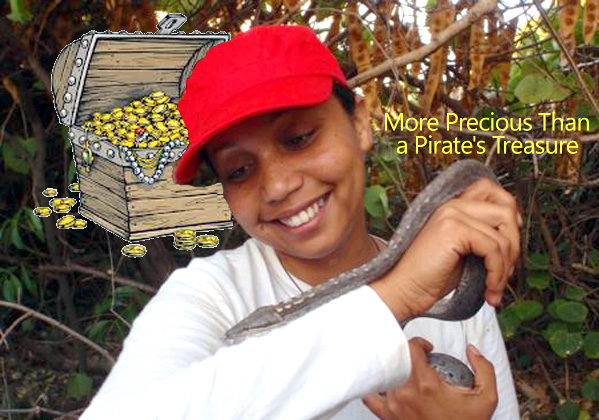 Snakes? I know, for most people they command little love. We place the few humans who like them in remote categories generously tagged as “weird.” But where I’m going in a few weeks, they’re more precious than pirate treasure!
Snakes? I know, for most people they command little love. We place the few humans who like them in remote categories generously tagged as “weird.” But where I’m going in a few weeks, they’re more precious than pirate treasure!
Next week I travel to the furthest eastern part of Africa, Mauritius. Everything about the island nation is unique, including its biology probably best represented by … a snake.
Mauritius is a marvel of development. The size of Maui it’s isolated with its cousins Réunion and Rodrigues, the former much bigger and the latter much smaller, in a remote part of the Indian Ocean 700 miles east of Madagascar.
This little stone in the pond ought be easily overlooked. Australia is 3700 miles away. India is 2900 miles away. Johannesburg is 1900 miles away. What’s close?!
Nothing! But once upon a time Mauritius was crucial for the maritime development of the planet, important enough to cause war between France and Britain. When that era ended, the poor island was left with a hodgepodge of humanity, escaped slaves and deported prisoners and defeated pirates and all manner of disenfranchised and disgruntled humanity.
Well anyone visiting Mauritius today recognizes if any place on earth got their human act together, this place did. Not only is it an incredible international tourist destination, it’s quickly becoming another financial center for the world, a new Hong Kong.
Mauritius per capita income is 60th in the world, second in Africa (after the Seychelles). This puts it a bit higher than Argentina and Mexico, a bit lower than Chile. Not bad for a remote stone in the pond.
But this development came at a terrible price to its extremely precious island ecology. This, of course, was once the domain of the dodo.
Island ecologies are precious just because they’re islands. Their natural isolation preserves more of the history of extant evolution than any other place on earth. At the same time they’re the most vulnerable, because their defenses against threats like invasive species are poorly developed.
Alas people came to Mauritius and the dodo lasted for a nano moment longer in its long history of survival. This was true of almost 85% of everything that was once living there.
A few tiny islands off its shore, the Île aux Aigrettes and Round Island, for example, somehow managed to be so unattractive to the burgeoning human society that a few things survived on them that today give us remarkable insights into the distant past.
I’ll be taking my group to Île aux Aigrettes in a few weeks and I’ll let you know about our visit! Round Island isn’t open to visitors. The 15-mile open sea sailing from the mainland is dangerous, but equally important, its precious remaining biology is among the most important on earth. It’s very hard to get permission to visit, even by helicopter.
Here almost everything alive is endangered. So that means that the keel-scaled boa is one of the most precious life forms on earth.
It seems to have been around since the dinosaurs went extinct 65 million years ago. That major planet event was a pivotal moment in evolution for so many of the things that live, today. This snake – unlike almost every other snake – has unusual jaws that clamp, linking its heritage to early creatures that gave rise to animals like the gecko.
Which it now eats, by the way. And that gecko is also endangered. And what the gecko eats is also endangered!
So the fragility of this ecosystem is unbelievable. Somehow hidden from the marauding sailors of the 19th century and their voracious rats and goats and pigs, these few Round Island creatures are a living relic of the very distant past.
We won’t be able to see that, and frankly I think I’d be rather nervous about going there. It’s rather easy to step on a camouflaged skink.
But I can’t wait to visit Île aux Aigrettes. Stay tuned!